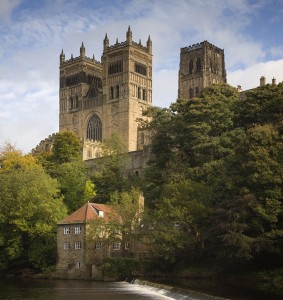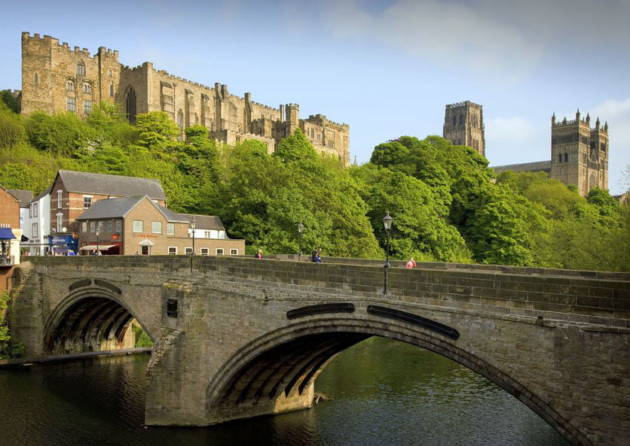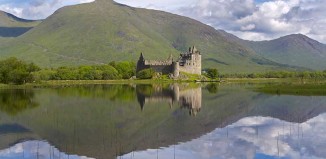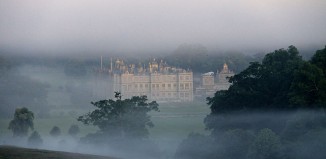Durham Castle and Cathedral
Upon entering Durham, the River Wear performs a swooping U-turn to create a rocky peninsula on which stand Durham Cathedral and Durham Castle. The cathedral towering majestically above the river and the castle, standing as guard to the peninsula’s main access point, must have struck awe into the hearts of visitors to the town and acted as an effective symbol of the Normans’ power following their conquest of Britain.

Indeed, UNESCO, which bestowed World Heritage status to the entire site in 1986, declared it to be “the largest and most perfect monument of ‘Norman’ style architecture in England”.
It is to this site that the body of St Cuthbert, the evangelist of Northumbria, was transferred from Lindisfarne. Though there are sadly no remains of the original 10th-century “White Church” that was built as a shrine to him, the treasures of the present Durham Cathedral do include his relics as well as the remains of the Venerable Bede. Additionally, its Durham Dean and Chapter Library contain one of the most complete set of early printed books in England, including the pre-dissolution monastic accounts, and three copies of the Magna Carta.
The northern front of the cathedral faces on to Palace Green from where you can see its full 496ft length. On the opposite side of Palace Green is the castle, which served as both Norman fortress and the residence of the prince-bishops of Durham. Its architecture has evolved over eight centuries, beginning in 1072 and steadily growing into a labyrinth of halls and galleries of different periods. Gradually its role became more residential than military and in the 19th century it became part of Durham University.
Words: Ian White








